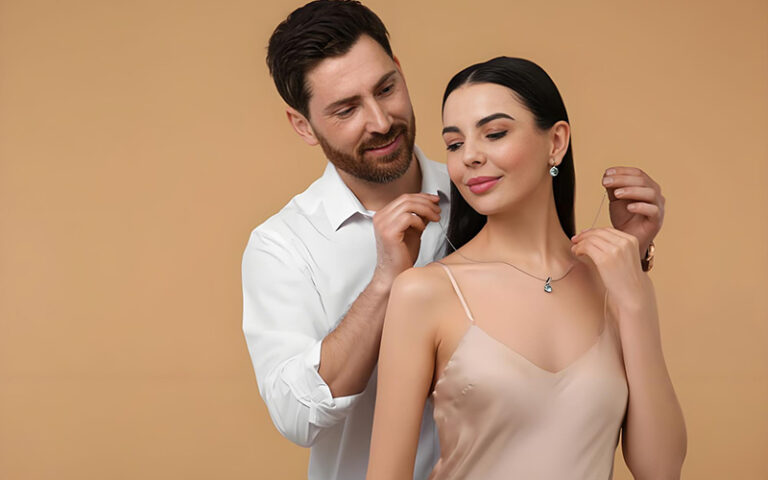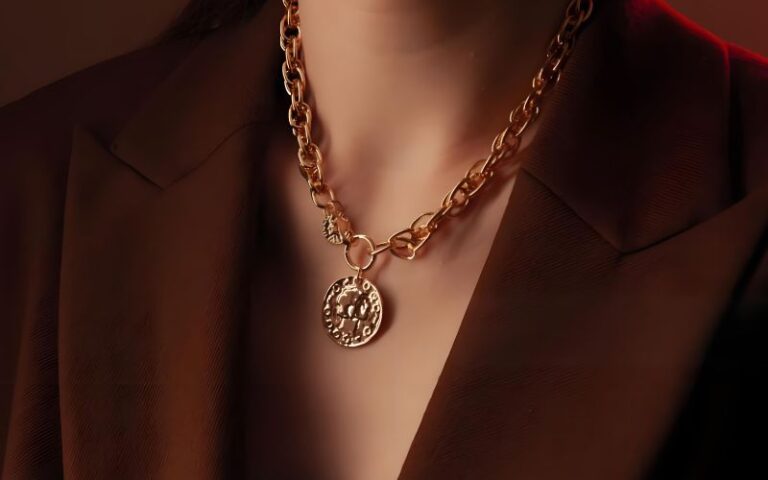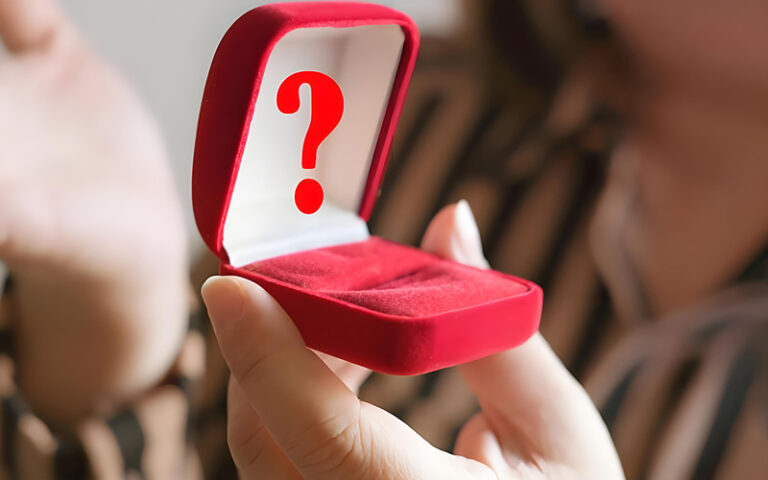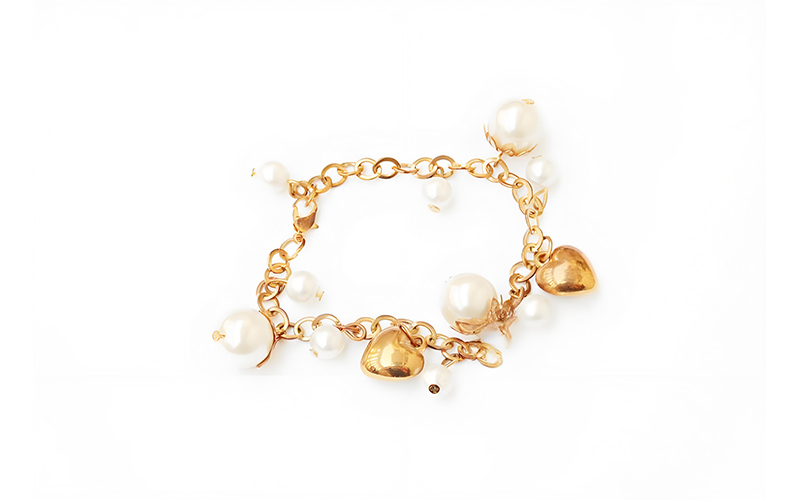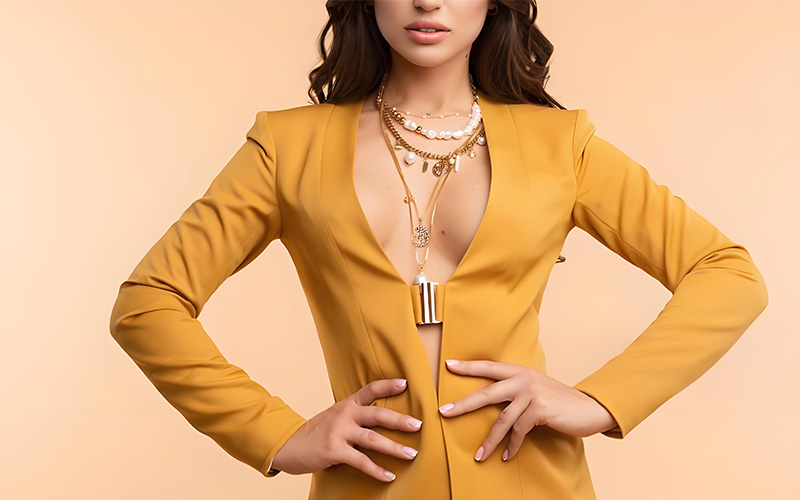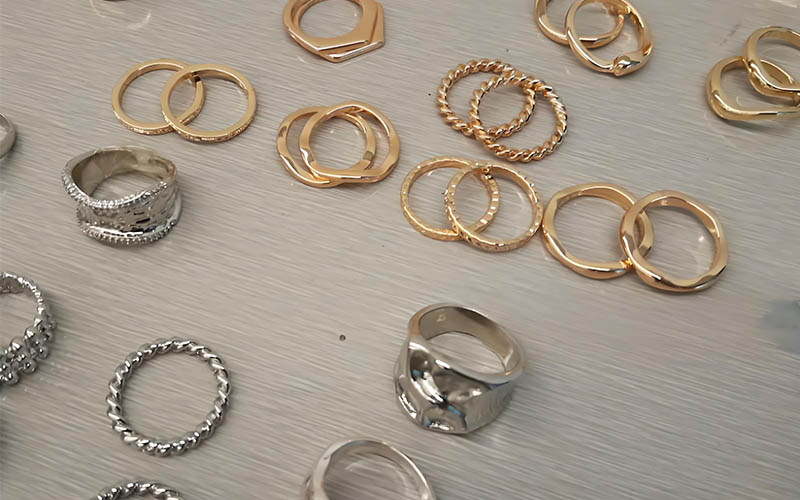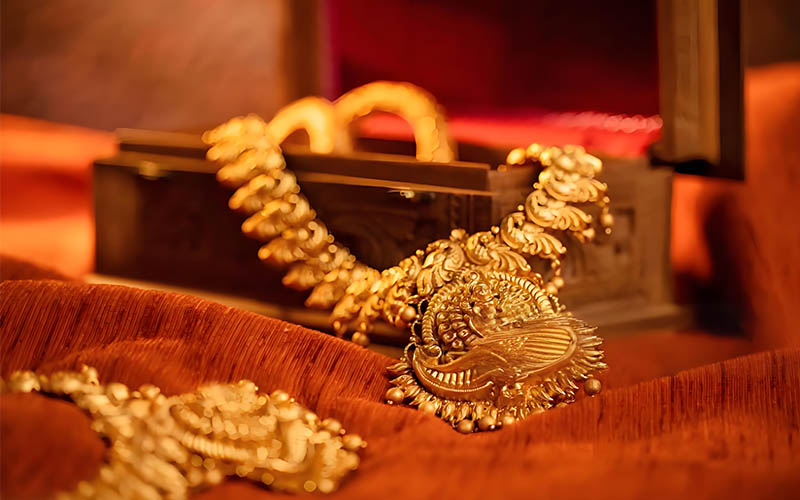
Kompletny przewodnik po srebrze próby 925: Zrozumienie kluczowych różnic
Kiedy piętnaście lat temu zacząłem pracować z metalami szlachetnymi, byłem zdezorientowany co do różnicy między srebrem próby 925 a zwykłym srebrem. Klienci pytali mnie o "srebro 925" i "srebro próby 925", tak jakby były to różne rzeczy. Ta dezorientacja prowadziła do złych decyzji zakupowych i rozczarowanych klientów.
W tym kompleksowym przewodniku podzielę się wszystkim, czego dowiedziałem się o srebrze próby 925 i jego porównaniu z czystym srebrem. Dowiesz się, dlaczego zrozumienie tych różnic może pomóc Ci zaoszczędzić pieniądze i dokonać lepszego wyboru biżuterii. Niezależnie od tego, czy kupujesz swoją pierwszą srebrną biżuterię, czy powiększasz swoją kolekcję, ten artykuł dostarczy Ci wiedzy, która pozwoli Ci robić zakupy z pewnością siebie.
Spis treści
Czym jest srebro i dlaczego oznaczenie 925 ma znaczenie?
Kiedy oglądam srebrną biżuterię w moim warsztacie, zawsze najpierw szukam znaczka 925. Ten niewielki znak mówi mi wszystko, co muszę wiedzieć o jakości metalu. Srebro próby 925 jest stopem, który zawiera 92,5% srebra i 7,5% innych metali, zazwyczaj miedzi. Znak 925 potwierdza ten dokładny skład.
Wielu klientów pyta mnie, dlaczego nie używa się czystego srebra. Odpowiedź jest prosta: czyste srebro, znane również jako srebro próby 999, jest zbyt miękkie do większości zastosowań jubilerskich. Widziałem, jak pierścionki z czystego srebra wyginają się od normalnego noszenia w ciągu kilku tygodni. Dodatek miedzi i innych metali sprawia, że srebro jest znacznie trwalsze, zachowując jednocześnie piękny wygląd, który kochamy.
System oznaczenia 925 to nie tylko przypadkowa liczba. Reprezentuje on globalny standard, który zapewnia jakość i spójność. Kiedy widzisz ten znaczek na srebrnych przedmiotach, wiesz dokładnie, co otrzymujesz. Ta standaryzacja sprawiła, że srebro próby 925 jest najbardziej zaufaną formą srebra w branży jubilerskiej.
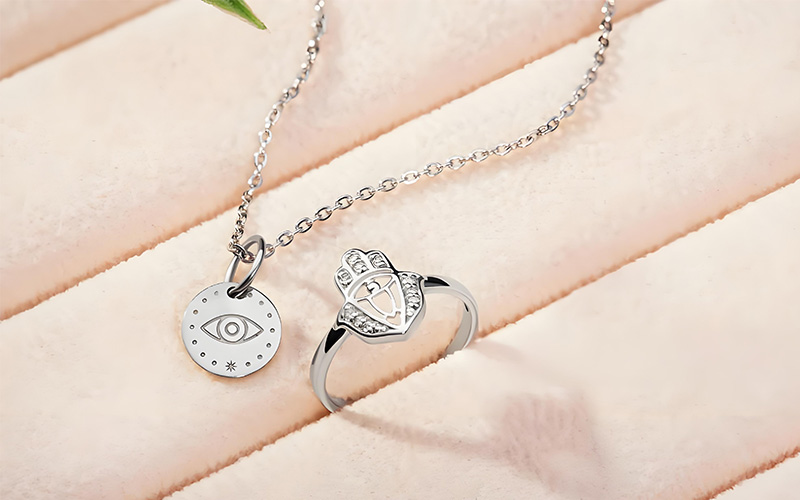
Jak wypada porównanie czystego srebra ze srebrem próby 925?
Z mojego doświadczenia w pracy zarówno z czystym srebrem, jak i srebrem próby 925 wynika, że różnice są diametralne. Czyste srebro zawiera 99,9% srebra, co czyni je najczystszą dostępną formą srebra. Czystość ta ma jednak istotne wady, z których większość nabywców biżuterii nie zdaje sobie sprawy, dopóki nie jest za późno.
Czyste srebro jest niezwykle miękkie i plastyczne. To sprawia, że doskonale nadaje się do niektórych specjalistycznych zastosowań, ale jest problematyczne w przypadku codziennej biżuterii. Naprawiłem niezliczoną ilość biżuterii z czystego srebra, która uległa uszkodzeniu podczas normalnego użytkowania. Metal ten łatwo się rysuje, wgniata od drobnych uderzeń, a nawet może zmieniać kształt pod wpływem ciepła i ruchu ciała.
Srebro próby 925 zapewnia idealną równowagę między czystością a praktycznością. Zawartość 92,5 procent srebra zapewnia połyskliwy wygląd i cenną zawartość metalu, której oczekują klienci. Pozostałe 7,5%, zazwyczaj miedź, dodaje wytrzymałości bez znaczącego wpływu na wygląd. Ta kombinacja tworzy metal, który jest zarówno piękny, jak i funkcjonalny do codziennego noszenia.
Co sprawia, że srebro próby 925 jest trwalsze od zwykłego srebra?
Różnica w trwałości między srebrem próby 925 a innymi rodzajami srebra zawsze robiła wrażenie na moich klientach, gdy zrozumieli stojącą za tym naukę. Kiedy miedź jest dodawana do czystego srebra w celu stworzenia stopu srebra próby 925, zasadniczo zmienia to strukturę metalu na poziomie molekularnym. Proces ten tworzy znacznie twardszy i bardziej odporny materiał.
Zwykłe srebro, w szczególności czyste srebro, nie posiada tej wzmocnionej struktury. Atomy srebra w czystym metalu mogą łatwiej poruszać się i zmieniać pod wpływem ciśnienia. Dlatego też biżuteria z czystego srebra często ulega zużyciu, zarysowaniom i zmianom kształtu znacznie szybciej niż biżuteria ze srebra próby 925. Z kolei atomy miedzi w srebrze próby 925 tworzą silniejszą strukturę krystaliczną, która jest odporna na odkształcenia.
Tę różnicę w trwałości testowałem niezliczoną ilość razy w moim warsztacie. Biżuteria ze srebra próby 925 może wytrzymać codzienne noszenie, okazjonalne upadki i normalne użytkowanie bez znaczących uszkodzeń. Metal ten zachowuje swój kształt i wykończenie znacznie dłużej niż alternatywy z czystego srebra. Ta trwałość sprawia, że srebro próby 925 jest doskonałą inwestycją dla biżuterii, którą planujesz nosić regularnie.
Dlaczego srebro próby 925 matowieje i jak temu zapobiec?
Matowienie jest prawdopodobnie najbardziej niezrozumiałym aspektem srebra, z jakim spotykam się w kontaktach z klientami. Wiele osób uważa, że zmatowienie oznacza, że ich biżuteria jest podrobiona lub niskiej jakości. W rzeczywistości matowienie jest naturalnym procesem, który zachodzi, gdy srebro reaguje ze związkami siarki w powietrzu. Reakcja ta tworzy ciemną warstwę powierzchniową, która może sprawić, że biżuteria będzie wyglądać na matową lub czarną.
Zawartość miedzi w srebrze próby 925 w rzeczywistości przyczynia się do jego matowienia. Miedź sprawia, że stop jest trwalszy, ale także bardziej reaktywny na czynniki środowiskowe. Czyste srebro matowieje, ale znacznie wolniej niż srebro próby 925. Jednakże, to wolniejsze matowienie nie przeważa nad problemami z trwałością czystego srebra w większości zastosowań.
Zapobieganie matowieniu srebra jest łatwiejsze niż większość ludzi sądzi. Zawsze zalecam przechowywanie srebrnej biżuterii w woreczkach lub pudełkach z żelem krzemionkowym. Srebrną biżuterię należy trzymać z dala od perfum, balsamów i środków czyszczących. Regularne delikatne czyszczenie za pomocą ściereczki do polerowania srebra może usunąć lekki nalot i zapobiec ciężkiemu osadzaniu się kamienia. Przy odpowiedniej pielęgnacji srebrne przedmioty mogą zachować swój piękny wygląd przez dziesięciolecia.
Jak odróżnić srebro szterlingowe od innych rodzajów srebra?
Nauka rozpoznawania srebra próby 925 stała się kluczowa, ponieważ na rynku dostępnych jest wiele posrebrzanych i niklowanych srebrnych alternatyw. Pierwszą rzeczą, którą sprawdzam, jest pieczęć. Prawdziwe srebro próby 925, "Sterling" lub "92.5" będzie oznaczone gdzieś na elemencie. Znaczki mogą być jednak podrobione, więc stosuję dodatkowe metody weryfikacji.
Test magnetyczny jest jednym z moich ulubionych szybkich testów. Srebro próby 925 nie jest magnetyczne, więc jeśli silny magnes przyciąga srebrny przedmiot, nie jest to prawdziwe srebro próby 925. Należy jednak zachować ostrożność podczas tego testu - niektóre autentyczne srebrne przedmioty mają magnetyczne zapięcia lub elementy wykonane z innych metali.
Waga i wygląd dostarczają dodatkowych wskazówek. Srebro próby 925 ma znaczną wagę w porównaniu do przedmiotów posrebrzanych, które często mają lekkie metale nieszlachetne pod cienką warstwą srebra. Kolor i połysk autentycznego srebra próby 925 mają również charakterystyczną jasność, którą potrafią rozpoznać doświadczeni jubilerzy. W razie wątpliwości, profesjonalny jubiler może przeprowadzić testy kwasowe, które definitywnie zidentyfikują srebro próby 925.
Jaka jest prawdziwa różnica między srebrem a posrebrzanymi przedmiotami?
Różnica między biżuterią srebrną a posrebrzaną stała się dla mnie jasna na początku mojej kariery, gdy klienci przynosili uszkodzone elementy. Elementy posrebrzane składają się z metalu nieszlachetnego (często mosiądzu, miedzi lub niklu) pokrytego cienką warstwą srebra. Ta srebrna powłoka może się ścierać, odsłaniając różnokolorowy metal znajdujący się pod spodem.
Srebro próby 925, będące litym metalem, nie ma tego problemu. Gdy srebrna biżuteria zostanie zarysowana lub zużyta, pozostaje srebrna, ponieważ cały element jest wykonany z tego samego stopu srebra próby 925. Ta fundamentalna różnica znacząco wpływa zarówno na wygląd, jak i trwałość.
Różnica w wartości jest również znacząca. Posrebrzane przedmioty mogą początkowo kosztować mniej, ale często wymagają wymiany w ciągu miesięcy lub lat, ponieważ srebrna powłoka zużywa się. Elementy ze srebra próby 925, przy odpowiedniej pielęgnacji, mogą przetrwać pokolenia. Przeliczając koszt na rok posiadania, biżuteria ze srebra próby 925 często okazuje się bardziej ekonomiczna pomimo wyższej początkowej inwestycji.
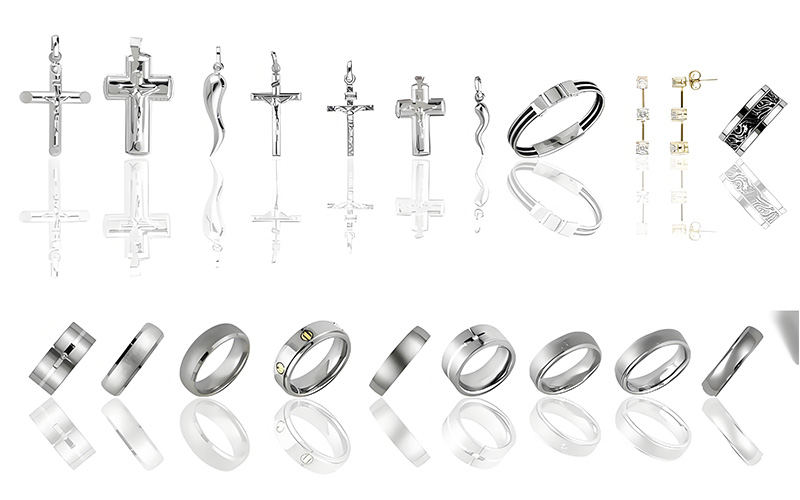
Który rodzaj srebra oferuje najlepszy stosunek jakości do ceny?
Po latach pomagania klientom w wyborze między różnymi opcjami srebra, konsekwentnie polecam srebro próby 925 ze względu na najlepszą ogólną wartość. Czyste srebro kosztuje więcej, ale brakuje mu trwałości w zastosowaniach jubilerskich. Elementy posrebrzane kosztują początkowo mniej, ale wymagają częstej wymiany. Srebro próby 925 to najlepszy wybór dla większości kupujących.
Wartość srebra próby 925 wynika z połączenia zawartości metali szlachetnych i praktycznej trwałości. Otrzymujesz 92,5% szlachetnego srebra, które z czasem zachowuje swoją wartość. Metal ten jest wystarczająco wytrzymały do codziennego noszenia, co oznacza, że inwestycja trwa dłużej. Srebro próby 925 zachowuje również swój wygląd lepiej niż alternatywy, jeśli jest odpowiednio konserwowane.
Rozważ całkowity koszt posiadania podczas oceny opcji srebra. Srebrny pierścionek może początkowo kosztować trzy razy więcej niż wersja posrebrzana. Jeśli jednak srebrny pierścionek przetrwa dziesięć razy dłużej i zachowa swój wygląd, będzie to oznaczać, że zyskujesz lepszą wartość. Ponadto, srebro może być polerowane, naprawiane, a nawet przetapiane w celu recyklingu, co zwiększa jego długoterminową wartość.
Dlaczego jubilerzy wolą srebro od czystego srebra?
Z punktu widzenia produkcji, srebro próby 925 jest znacznie lepsze od czystego srebra do tworzenia biżuterii. Stop jest łatwiejszy w obróbce, lepiej zachowuje szczegóły i tworzy mocniejsze gotowe elementy. Kiedy tworzę złożony projekt, potrzebuję metalu, który nie odkształci się podczas procesu tworzenia ani nie wygnie się później.
Miękkość czystego srebra sprawia, że prawie niemożliwe jest tworzenie drobnych detali lub bezpieczne osadzanie kamieni. Metal zbyt łatwo porusza się pod naciskiem, powodując problemy podczas produkcji i noszenia. Srebro próby 925 zachowuje swój kształt podczas obróbki i zapewnia bezpieczne osadzenie kamieni szlachetnych i elementów dekoracyjnych.
Konsystencja srebra próby 925 sprawia, że idealnie nadaje się ono do masowej produkcji i kontroli jakości. Każdy element wykonany ze srebra próby 925 będzie miał takie same właściwości i cechy. Ta przewidywalność pozwala jubilerom gwarantować swoją pracę i oferować gwarancje na srebrne elementy. Standaryzowany charakter stopu zapewnia satysfakcję klienta i zmniejsza liczbę zwrotów.
Jak dbać o kolekcję srebrnej biżuterii?
Właściwa pielęgnacja srebrnej biżuterii nie jest skomplikowana, ale wymaga konsekwencji. Zawsze powtarzam klientom, że zapobieganie jest łatwiejsze niż odnawianie. Przechowuj srebrne elementy pojedynczo w miękkich woreczkach z tkaniny lub woreczkach zapobiegających matowieniu, aby zapobiec zarysowaniom i powolnemu matowieniu. Unikaj przechowywania wielu elementów razem, gdzie mogą się o siebie ocierać.
Srebrną biżuterię należy regularnie czyścić miękką, niestrzępiącą się ściereczką przeznaczoną do pielęgnacji srebra. Do głębszego czyszczenia użyj łagodnego środka do czyszczenia srebra lub przygotuj pastę z sody oczyszczonej i wody. Unikaj ostrych chemikaliów, myjek ultradźwiękowych (chyba że są przeznaczone specjalnie do srebra) i materiałów ściernych, które mogą zarysować powierzchnię.
Biżuterię srebrną należy zakładać jako ostatnią i zdejmować jako pierwszą. Perfumy, płyny i kosmetyki mogą przyspieszyć matowienie i uszkodzenia. Zdejmuj srebrną biżuterię przed pływaniem, prysznicem lub ćwiczeniami. Chlor w basenach i sól w pocie mogą z czasem powodować przebarwienia i uszkodzenia.
Jakie są powszechne mity na temat srebra i srebra próby 925?
Jednym z największych mitów, z jakimi się spotykam, jest to, że zmatowienie srebra oznacza, że przedmiot jest podrobiony. W rzeczywistości autentyczne srebro próby 925 z czasem matowieje ze względu na zawartość srebra reagującego z siarką w środowisku. Przedmioty, które nigdy nie matowieją, najprawdopodobniej są posrebrzane lub wykonane z innych metali.
Innym powszechnym błędnym przekonaniem jest to, że wyższa zawartość srebra zawsze oznacza lepszą jakość. Chociaż czyste srebro zawiera więcej srebra niż srebro próby 925, jest ono zbyt miękkie dla większości zastosowań jubilerskich. 92,5-procentowa zawartość srebra w srebrze próby 925 zapewnia optymalną równowagę między zawartością metali szlachetnych a trwałością w biżuterii.
Wiele osób uważa również, że cała srebrna biżuteria oznaczona "925" jest tej samej jakości. Podczas gdy zawartość srebra jest znormalizowana, pozostałe 7,5 procent może się różnić. Wysokiej jakości srebro próby 925 wykorzystuje miedź jako główny metal stopowy, podczas gdy wersje niższej jakości mogą zawierać nikiel lub inne metale, które mogą powodować reakcje skórne lub wpływać na trwałość.
Często zadawane pytania
P: Czy srebro próby 925 to to samo co srebro próby 925?
O: Tak, srebro próby 925 i srebro próby 925 odnoszą się do tego samego stopu metali zawierającego 92,5% srebra i 7,5% innych metali, zazwyczaj miedzi.
P: Czy srebro zmieni kolor mojej skóry na zielony?
O: Wysokiej jakości srebro próby 925 rzadko powoduje przebarwienia skóry. Jeśli tak się dzieje, jest to zwykle spowodowane zawartością miedzi reagującej z wilgocią i jest bardziej powszechne w przypadku stopów niższej jakości.
P: Jak mogę sprawdzić, czy moja srebrna biżuteria jest prawdziwa?
O: Szukaj znaczków takich jak "925", "Sterling" lub "92,5". Wykonaj test magnetyczny (prawdziwe srebro nie jest magnetyczne), sprawdź wagę (powinna być znaczna) i obserwuj kolor i połysk.
P: Dlaczego moja srebrna biżuteria matowieje?
O: Matowienie występuje, gdy srebro reaguje ze związkami siarki zawartymi w powietrzu, wilgoci i olejach skórnych. Jest to normalne zjawisko i nie wskazuje na niską jakość.
P: Czy mogę brać prysznic ze srebrną biżuterią?
O: Lepiej jest usunąć srebro przed wzięciem prysznica. Mydło, szampon i woda mogą przyspieszyć matowienie i mogą zawierać substancje chemiczne, które z czasem uszkadzają metal.
Zrozumienie różnic między srebrem próby 925 a czystym srebrem pozwala podejmować świadome decyzje dotyczące zakupu biżuterii. Srebro próby 925 oferuje najlepsze połączenie piękna, trwałości i wartości dla większości zastosowań jubilerskich. Przy odpowiedniej pielęgnacji, biżuteria ze srebra próby 925 będzie cieszyć przez lata, zachowując swój wygląd i wartość.


